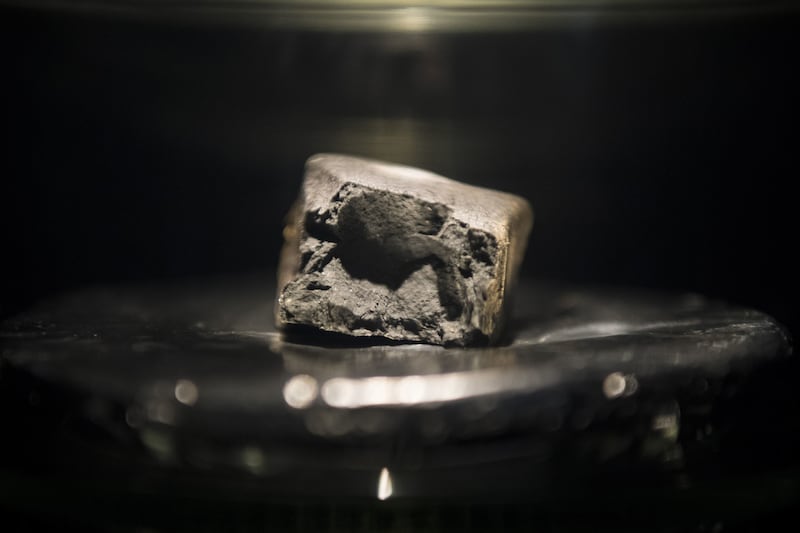Everyone’s favourite celebrity astrophysicist, Neil deGrasse Tyson, has given his verdict on the science of Game Of Thrones.
Everybody all caught up on #GameOfThrones? I have a comment or two, if anybody is interested…
— Neil deGrasse Tyson (@neiltyson) September 24, 2017
Who wouldn’t be interested in that? Here’s what Tyson had to say about some of the scientific points of interest in the latest series.
Disclaimer: if you’re a slow coach who hasn’t caught up just yet, there are spoilers ahead.
1. The chains didn’t make physical sense
Bad Physics in #GameOfThrones: Pulling a dragon out of a lake? Chains need to be straight, and not curve over hill and dale. pic.twitter.com/VIJlIuDz3L
— Neil deGrasse Tyson (@neiltyson) September 24, 2017
One of the main question marks which caused fans angst from season seven was undoubtedly, where did the Night King get those chains?
The series’ voiceless antagonist used his army of undead to drag Daenerys Targaryan’s dragon, Viserion, from the lake where he killed the beast – before turning the dragon into one of his wights to brilliant dramatic effect.
What Tyson isn’t happy with though was the fact there didn’t appear to be any tension on the chains as the dragon was pulled from the lake – making the feat physically nonsensical.
2. Dragon wings are on the right track
Good Bio-Physics in #GameOfThrones: The Dragon Wingspans are sensibly large, as their body weight would require for flight. pic.twitter.com/gzD5wI38u5
— Neil deGrasse Tyson (@neiltyson) September 24, 2017
Could dragons actually fly? Well, according to Tyson, they’ve got the principals right at least.
The weight of Deanerys’ dragons means they would require a huge amount of uplift to be capable of flight – meaning huge wings with a vast surface area are needed.
The sensibly large wingspan of Dragons in #GameOfThrones contrasts with aerodynamically useless wings of Renaissance cherubs. pic.twitter.com/I8L8ILBtUu
— Neil deGrasse Tyson (@neiltyson) September 24, 2017
However, other scientists have claimed dragon flight would still not be possible.
Michael Habib, a paleontologist at the University of Southern California told NBC in 2015 that if something as large as a dragon tried to fly its wings would likely break under the strain.
3. Dragons show some shrewd biology
Good Biology in #GameOfThrones: As in #LordOfTheRings, Dragons forfeited their forelimbs to make wings, like birds & bats. pic.twitter.com/pguBe6rosQ
— Neil deGrasse Tyson (@neiltyson) September 24, 2017
Tyson points out that dragons follow the same biology as other flying animals.
Birds and bats share a common ancestor with humans. As such, although arms and wings may look very different, they are made up of the same forearm bones – but through evolution they have extended to be thinner and lighter for flight.
If the dragons had arms too – Tyson may have been less enthused. Looking at you Welsh flag.

4. Worryingly, blue fire is much hotter than red
Intriguing Thermal Physics in #GameOfThrones: BlueDragon breath would be at least a factor of 3X hotter than RedDragon breath pic.twitter.com/RvpBkqJ1sw
— Neil deGrasse Tyson (@neiltyson) September 24, 2017
You might recall a certain scene at the end of the last series which showed the Night King’s Viserion breathing blue flame – you know, the one where he destroyed the Wall allowing his army of the dead to flood into the Seven Kingdoms and potentially destroy everyone?
Well, turns out there may be a reason Viserion made light work of the great defences – because blue flames are generally much hotter than red.
Assuming there are no chemicals causing the flame to appear a certain colour, blue flames are hotter. They appear blue because they have a greater oxygen supply and hence heat, meaning they don’t contain uncombusted fuel particles – which make flames appear closer to the red, orange or yellow part of the visible light spectrum.
Watch out Westeros…








